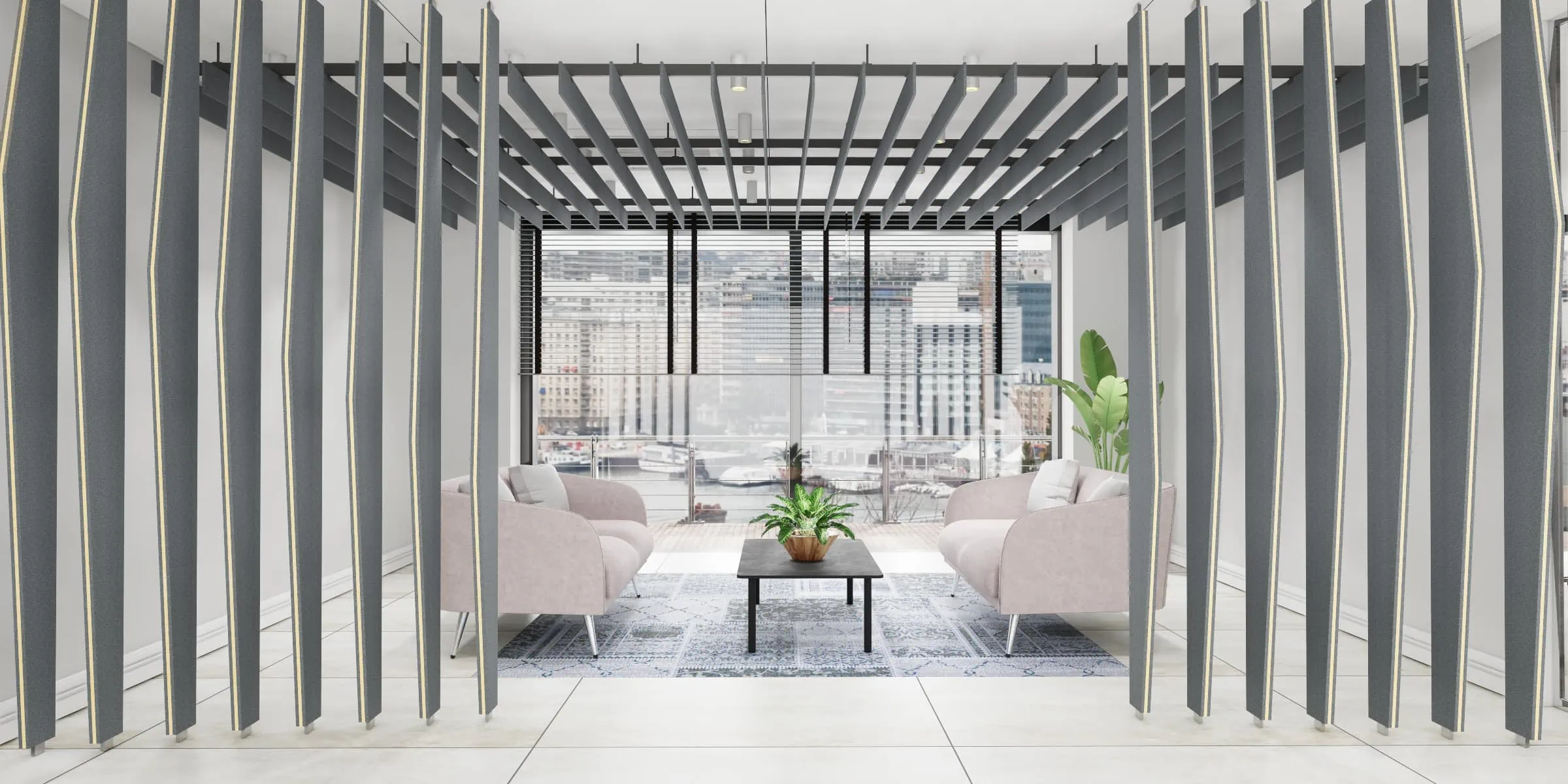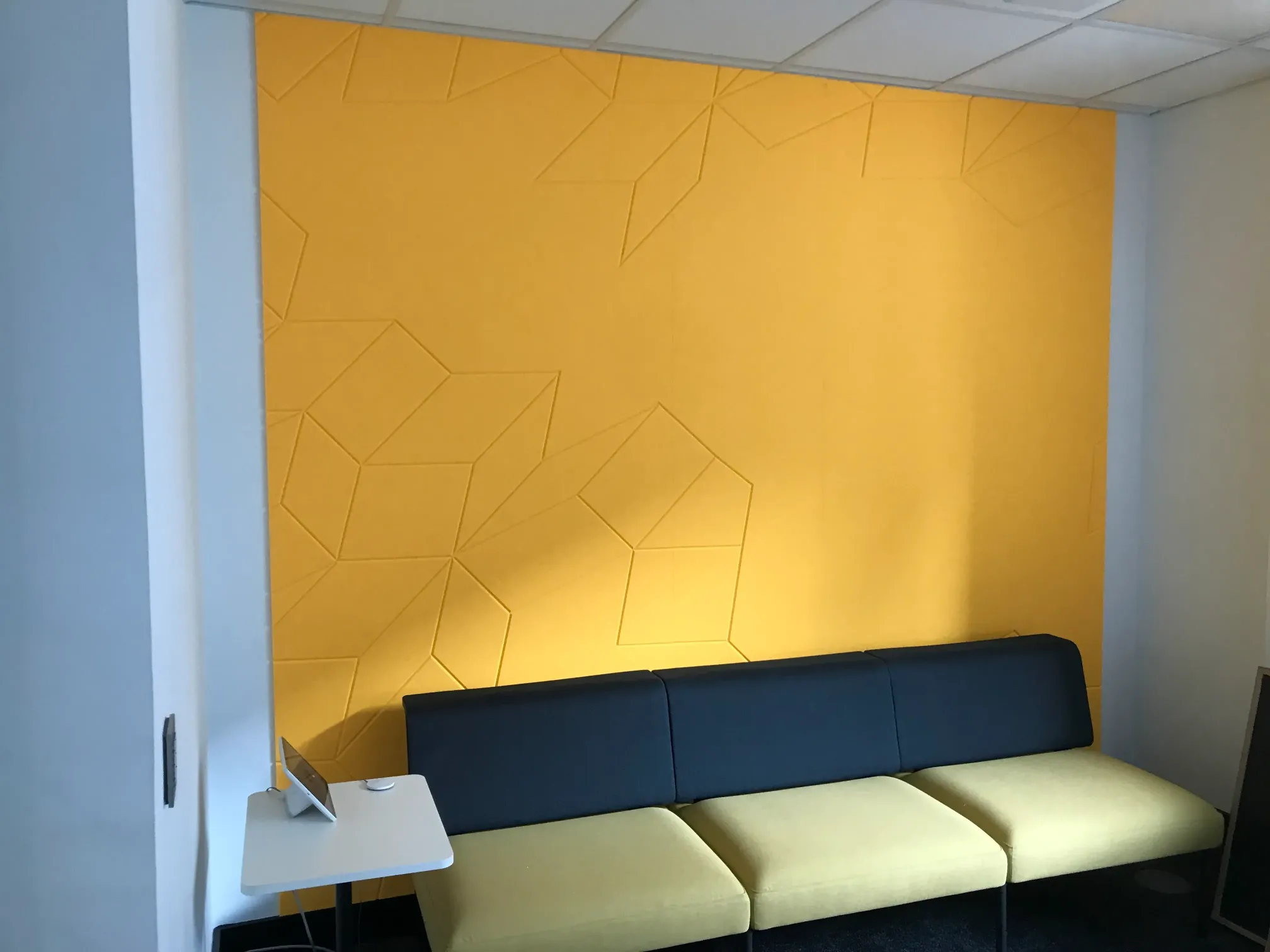The Importance of Acoustically Treating Your Office
No matter what kind of job you have, an office usually has the same basic things: desks, chairs, computers, phones, and paper. But there are two things that critically affect your health in the workplace: temperature and sound. That’s why it’s important to learn how to make your office sound better so that you and your colleagues can work more effectively.
Why Acoustic Panels Are Important
Acoustic panels are a cost-effective solution to improve the environment in an office. They work by absorbing sound waves, which can reduce the need for employees to speak loudly during phone calls or meetings. This can minimise interruptions and lower stress levels caused by excessive noise.
Using acoustic panels may help alleviate symptoms of tinnitus and promote better sleep at night. By making the office quieter and more comfortable, acoustic panels can enhance its overall appeal.
Common Acoustic Problems
Among the most prevalent issues are excessive reverberation, poor sound insulation, and background noise. Excessive reverberation occurs when sound waves bounce off hard surfaces, such as glass, concrete, or metal, creating an echo effect that distorts speech intelligibility and concentration.
Inadequate sound insulation between workspaces or conference rooms allows for sound leakage, leading to distractions and breaches of privacy. Background noise, stemming from sources like HVAC systems, office equipment, and conversations, can contribute to a noisy environment, reducing an individual’s ability to focus and increasing stress levels.
Implementing effective acoustic solutions, such as adding absorptive materials, installing sound barriers, and optimising office layout, is essential to creating a more comfortable and productive workspace.
Determining The Appropriate Sound Absorption Coefficient
Determining the appropriate sound absorption coefficient is a critical step in designing an effective acoustic environment for a variety of settings, including offices, educational institutions, public spaces, and residential areas. The sound absorption coefficient, which ranges from 0 (no absorption) to 1 (complete absorption), represents the proportion of incident sound energy absorbed by a material. Higher values indicate greater absorption and, consequently, reduced sound reflection. To establish the ideal coefficient for a specific application, several factors must be taken into account.
Different activities demand distinct acoustic environments; for example, a recording studio requires a higher sound absorption coefficient to minimise reflections and create a controlled acoustic setting, while a classroom may need a balance between sound absorption and reflection to promote clear communication and engagement.
Shorter reverberation times are beneficial for speech intelligibility, while longer times can enhance live performances. By selecting materials with suitable absorption properties, designers can create spaces that meet specific reverberation time goals.
Prevalent noise sources must be evaluated. Identifying the primary sources of noise, such as traffic, machinery, or conversations, helps in selecting the appropriate materials and absorption coefficients to mitigate disruptive sounds and create a comfortable auditory environment.
Lastly, the size and shape of the space, as well as its construction materials, play a significant role in determining the optimal sound absorption coefficient. Large open spaces with hard surfaces typically require greater sound absorption to reduce echo and reverberation, while smaller spaces with softer materials may require less.
Balancing these factors and employing materials with suitable absorption properties ensures an optimal acoustic experience tailored to the unique requirements of each space. This promotes comfort, productivity, and overall well-being for the occupants while also enhancing the aesthetic and functional aspects of the environment. By carefully selecting the appropriate sound absorption coefficient, designers can create spaces that effectively address both the acoustic and aesthetic needs of their clients.
Calmtone Grooved Yellow Wellsfargo
Acoustic baffles
Acoustic baffles offer a versatile and effective way to control sound in diverse environments like offices, industrial facilities, schools, and public spaces. By hanging these panels from the ceiling or mounting them on walls, they absorb and diffuse sound waves, reducing echo and noise pollution. The result? Clearer speech, increased privacy, and a more pleasant acoustic atmosphere.
Made from sound-absorbing materials like foam, fibreglass, or mineral wool, acoustic baffles often come wrapped in fabric or metal, offering a wide range of design and aesthetic choices. You can customise them to match the look of your space while tackling its unique acoustic challenges. Plus, they come in various shapes and sizes to suit your specific needs and tastes.
One of the best things about acoustic baffles is how easy they are to install and adapt. You can quickly reposition or remove them to keep up with changes in your space’s layout or purpose. This makes them perfect for dynamic environments that need regular updates. Besides helping with sound, acoustic baffles can also improve thermal insulation and energy efficiency.
By combining stylish ceiling baffles with a variety of design options, you can create an enjoyable and productive atmosphere that caters to the specific needs of different environments. Their simple installation and adaptability make them a go-to choice for anyone looking to boost acoustic comfort and overall well-being.
How To Position Absorption Panels
No matter what the size of your office, you should always place acoustic panels in the following places:
- In any shared spaces, keep conversations private.
- Behind your desk, ensure that your voice carries well enough for others to hear you.
- In a meeting room with hard surfaces to soften sounds and help everyone hear each other better.
In cubicles or private offices workers may be easily distracted by outside noises.

Regular Maintenance for Acoustic Panels
Regular checks and adjustments of acoustic panels are crucial for maintaining an optimal acoustic environment. By conducting routine inspections, you can ensure these panels consistently absorb and diffuse sound, minimise reverberation, and mitigate unwanted noise. Over time, factors such as dust accumulation, wear and tear, or shifting room elements may decrease the panels’ efficiency.
Undertaking periodic cleaning and repositioning maximises their performance and prolongs their lifespan. When changes are made to a space’s layout or purpose, adjustments to the acoustic treatment may be needed, as different configurations can necessitate alterations.
Through diligent monitoring and maintenance, you can guarantee that acoustic panels consistently deliver a comfortable and productive auditory environment.



